How to care for roses in the fall to properly prepare for winter
With proper care, the "queen of flowers" pleases with its flowering almost throughout the summer season. But it happens that even in late autumn, almost before the onset of cold weather, these bushes are still blooming. This happens because most of the varieties of roses grown on personal plots and in park zones were obtained as a result of selection, while obtaining many positive qualities. But there are also disadvantages, one of them - these flowers have forgotten how to "feel" when they should plunge into a state of rest.
The florist's task is to prevent the lush flowering of the bushes at the wrong time, which is why it is so important from the first decade of September to carry out various agrotechnical measures to prepare roses in the fall for winter. How these flowering shrubs survive the winter frosts and begin to bloom next season depends on the correct implementation of these activities.
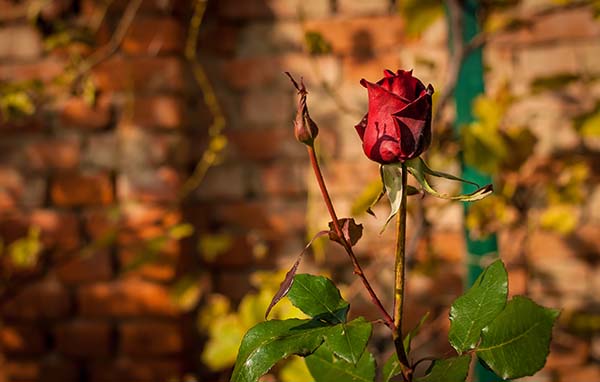
Content
Features of caring for roses in the fall: the main measures to prepare for winter
The main task of flower growers is that, with the onset of autumn, these flowering perennials stop the growth of the aboveground part. To do this, it is necessary to change the composition of fertilizers applied for these flowers from the middle of summer. And then the main activities for the care and preparation of roses for winter is from pruning and shelter.

By the way! Autumn is also the right time for cutting roses.
Autumn dressing of the "queen of flowers"
Since all varieties are distinguished by abundant long flowering, at the end of the flowering, the bushes need to replenish the supply of nutrients. But it should be remembered that from the beginning of flowering until the end of the season, nitrogen is excluded from the composition of fertilizers, which provokes an active growth of the vegetative mass.
In the fall, under all these flowering perennials, fertilizers are applied containing phosphoric and potash fertilizers, which strengthen the root system and shoots, stop the growth of the aerial part.
Phosphoric — superphosphate, bone meal, potassium - potassium sulfate, wood ash.
5-7 days after fertilization, pinch the tops of the shoots. This will speed up the process of lignification of the stems.
Advice! A separate fresh article recently appeared on the site about how and what to feed roses in autumn.

Autumn pruning roses
Do I need to cut roses for the winter, and why? A similar question is often asked by novice growers. The answer is simple - you need to cut roses for the winter in order to facilitate the shelter of these flowers. This is especially true for hybrid tea and standard varieties, which can reach a height of 1.8-2.0 m. It is difficult to cover such tall plants completely, therefore, roses should be cut in half in autumn so that the shoots are not damaged by frost.
By the way! The site has already appeared a separate detailed article about the autumn pruning of roses for the winter.
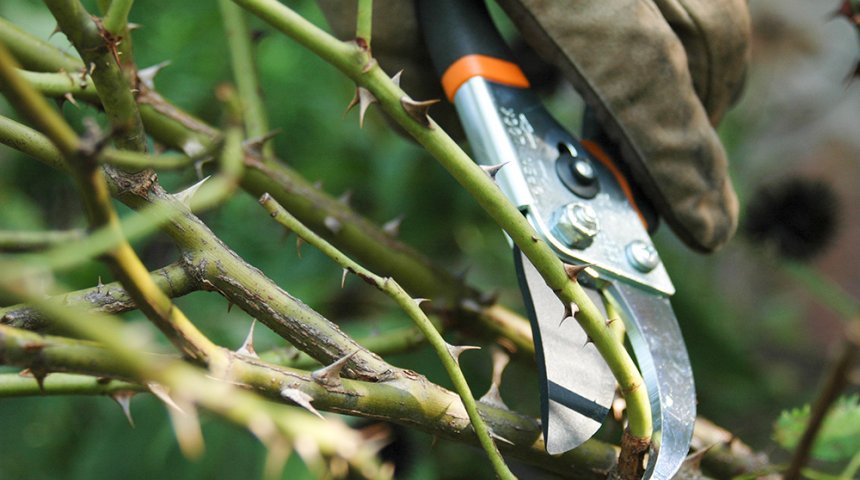
The need for trimming and timing
As mentioned above, the main thing in pruning roses in the fall is to reduce the height of the aboveground part so that it can be safely covered for the winter. When is the best time to cut flowers in the fall - the lunar calendar will tell gardeners. Experienced growers recommend pruning these flowering perennials on the waning moon.
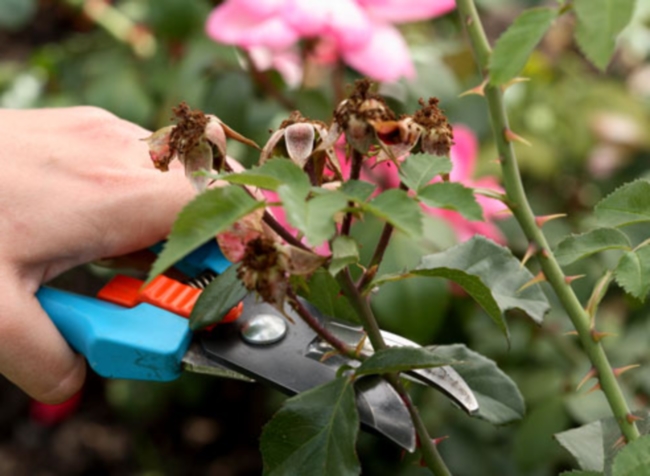
The nuances of pruning different types of roses for the winter
Before the onset of the cold season, the following varieties of roses should be cut in half for the winter:
- floribunda;
- hybrid tea varieties;
- miniature;
- polyanthus.

Curly with large flowers and shrubby roses are cut to 1/3 of the length of the shoots. But rose bushes with small flowers can not be cut off at all, just pinch their growth points.
Climbing roses are usually not pruned in the fall; if necessary, only sanitary pruning can be carried out.
Subject to all the rules and nuances, pruning flowers in the fall will be easy even for beginner and inexperienced gardeners.
Pruning rules
Advice! The site has already appeared a separate detailed article about the autumn pruning of roses for the winter.
You must adhere to the basic rules of autumn pruning roses for the winter:
- all cuts on the shoots are made at an angle of 45 degrees;
- weak, damaged, dried shoots are removed;
- all unripe shoots are cut out;
- for cutting branches, you must use sharp tools so as not to injure the branches.
Important! At the end of the procedure, the cut sites should be treated with any antiseptic; you can use ordinary wood ash. This must be done to prevent the penetration of dangerous microorganisms.
Video: how to properly prune roses for the winter.
Continue preparing roses for winter: shelter
Care and preparation of roses for winter includes the main thing - sheltering flower bushes for the winter.
Important! Detailed information about sheltering roses for the winter you can find in this new article.
But garden roses have one characteristic feature - with the onset of cold weather, sap flow in the aboveground part completely stops, but if warming begins and the air temperature rises above 0, the roses "wake up", sap begins to move along the stems, and the shrub prepares for flowering. And when cold weather sets in again, the juice in the stems freezes, the resulting ice breaks the stems, and microorganisms penetrate into the places of rupture, which can cause disease.

But if you allow the juice to dry quickly, and the cracks grow together, then this situation can be avoided. But most experienced flower growers try to prevent this situation and prepare flower beds with "flower queens" in time for winter. Therefore, preparing roses for winter is so important.

Therefore, in the fall, you should worry about creating such a shelter for these shrubs, in which it would be dry, and also would not feel the fluctuation of the ambient temperature.
Video: preparing roses for winter
How to properly cover
Note! Detailed information about sheltering roses for the winter you can find in this new article.
To properly cover roses for the winter, many gardeners tend to use two main methods:
- earthen shelter (hilling);
- air dry.
Earthen method of shelter (hilling)
A step-by-step method of sheltering roses for winter begins with their preparation:
- First, remove all the foliage remaining on the shoots.
- The lower parts of the stems and the ground around the bushes should be treated with a 3% solution of copper sulfate (or 3% solution of Bordeaux liquid).
- The soil around the bush should be covered with a thick layer of sand (up to 15 cm thick). Such a measure will protect the root system of flowers from a sudden cold snap.
But the aerial part of the plant during this period, when the air temperature has already dropped to 0, is not yet covered. Although the plant is already practically dormant, nutrients are deposited in its stems that will be needed by the shrub in the spring with the onset of the long-awaited warmth. This process can only take place under the influence of sunlight, so it is required not to cover the rose shoots as long as possible.
At the end of October - November, when the thermometer drops below 0, the next stage of preparation for winter begins in roses - most of the moisture from the stems disappears, and the starch stored in advance breaks down into natural sugars. It is they who will protect the aerial part of the plant from the impending cold weather.
At this stage, the shoots no longer require sunlight, and at any time a strong cold snap may begin, so it is correct to start covering the aboveground part of the roses for the winter. All remaining foliage is removed, the shoots are cut off by about half, treated with any pesticide for prevention purposes, and only then covered with any insulating material.
What is the best way to cover roses for the winter?Experts recommend using high-moor peat as a covering material. - it has a high moisture capacity, so it can freeze quickly, but thaws slowly. Therefore, the temperature inside such a shelter will be practically constant during the winter. And during the next season, this shelter will serve as an additional fertilizer for flowers.
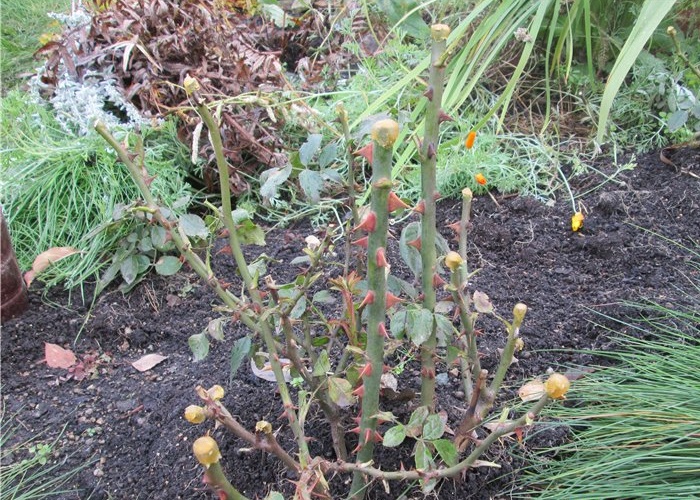
To prevent this covering material from being blown apart during the winter by strong gusts of wind, specially prepared wood shields (or spruce branches) are usually placed on top. Spruce or pine branches are also excellent protection of this perennial from small rodents (in particular, from mice).
Air dry method
An air-dry shelter is a frame made of metal pipes, fittings, wooden blocks about half a meter high. The main condition of such a structure is its strength, because in winter it must withstand the weight of snow, as well as strong gusts of wind.
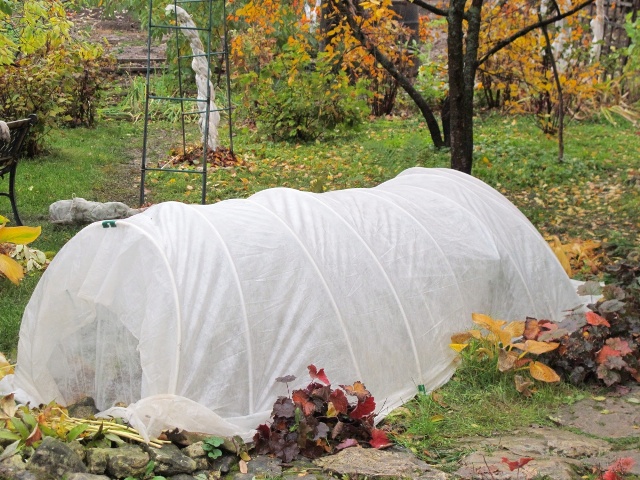
Before a cold snap, you should remove all the foliage from the bottom of the rose bushes, treat the shoots and the ground with copper sulfate and dig up the trunk circle.All shoots should be tied, bent to the ground and secured with special brackets. If the stems no longer bend, then they need to be cut off, leaving shoots up to 0.4 m long.
When the first frosts come, all foliage is removed, as well as unripe stems. The frames are covered with any covering material, leaving the ends free. When frosty weather sets in, you should close them too. On top of the covering material, it is necessary to put a film that will protect the bushes from getting snow or other moisture inside. Bricks or boards are placed on the edges of the polyethylene below.
The second method of sheltering bushes is not suitable if the bushes grow on too wet soils - in this case, moisture will collect inside the shelter, which is very harmful for these flowers.
Video: how to properly cover roses for the winter
The nuances of sheltering climbing roses for the winter
Climbing roses are not pruned. They are removed from the supports, the foliage is stripped, and treated with any fungicidal preparation. A sheet of roofing material is placed under the lashes in order to exclude the likelihood of rotting shoots, they are covered with sand (or earth) on top. When the time of frost comes, this variety of roses is covered with roofing material on top, securing the edges so that it is not blown away by the wind.
The rest of the varieties of roses before the shelter for the winter must be cut in the fall (about half).
Video: how to cover a climbing rose for the winter
Attention! Detailed information about sheltering roses for the winter you can find in this new article.
The complex of agrotechnical measures for the preparation of rose bushes for winter is not too difficult, therefore, after appropriate preparation, even novice growers can cope. The main thing is to adhere to all the rules, and then you can save roses in winter without any problems. And the "queen of flowers" will delight with its flowering for more than one season.


Thank you for the interesting, very detailed and understandable material. I wish you success and all the best!
Thank you very much for the information. Tell me please . I live in the Saratov region. Summer is very hot here. This year they brought us roses. Of 30 pcs. gave leaves 4-5. Watered. I gave dry nitrogen followed by watering. Then humate. Several were thrown away. Autumn comes later than in the middle lane. It's still warm in October. I want to know when is it better to give phosphorus fertilizers and is it worth waiting until next year for the growth of our roses? I must say right away that we do not know the acidity of the soil. They planted them in haste. These roses were brought to our temple and we had to plant them quickly. The land is practically virgin land. Maybe you will advise something. I am generally new to gardening.
Good day!
It is definitely not worth waiting for the next year, this fall should be given exactly potassium-phosphorus, and not just phosphorus fertilizer (optimally in liquid form, i.e. prepare a solution). As for the timing, the autumn feeding is performed approximately 2-4 weeks before the onset of frost, i.e. in early October. And, as it seems to me, in your case it would be very nice to mulch the roses with humus (rotted manure), so to speak, to fertilize them with organic matter.